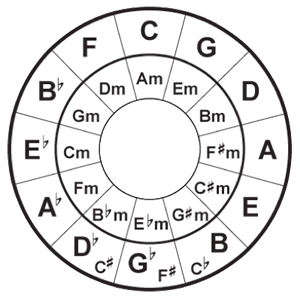@vibe So many land mines here, but I’m gonna try my best to respond. The modes in and of themselves can be very confusing at the beginning, and then add in how they apply to the harmonica and can be double confusing lol, but here goes…
First of all, you are 100% correct that 1st position is naturally the major scale (Ionian mode) and 2nd position is naturally the Mixolydian mode. In Beginner to Boss, I go over this in Module 9, Lesson 7.
But I want to try an address your question:
The answer to this question is NO. To explain, lets just talk in terms of a C. IF WE ARE PLAYING ALONG WITH A SONG IN C MAJOR, Switching from 1st position (C Major) to 2nd position (G Mixolydian) doesn’t really change the sound, BECAUSE C MAJOR AND G MIXOLYDIAN HAVE THE EXACT SAME NOTES.
It’s true that we might make different note choices thinking one way versus the other, BUT THE NOTES THEMSELVES ARE IDENTICAL.
By contrast, the modes are most helpful for distinguishing different tonal qualities from a common root. (In music, as in life, context is everything. It’s all relative to the root.)
So the power of hearing the difference between Major (Ionian mode) and the Mixolydian mode is comparing C MAJOR VS. C MIXOLYDIAN.
On the harmonica we accomplish this by. playing 1st position on a C harmonica or second position on an F harmonica. Now we can hear the difference between the sound of major versus the sound of mixolydian.
By contrast, going from C major to G Mixolydian isn’t changing a mode. (Again, it could change our note choice because in our minds we’ve changed the point of reference of where are root is. But our EARS still here the root of the chord progression is C, so it SOUNDS like C MAJOR.) Make sense?
Again context is everything. There are 7 Diatonic modes, and when playing IN THE CONTEXT of a chordal progression in C major, these 7 modes are “enharmonic” (which is the musical term for contacting exactly the same notes - i.e., sound exactly the same:)
C Major (I)
D Dorian (ii)
E Phrygian (iii)
F Lydian (IV)
G Mixolydian (V)
A Aeolian (vi)
B Locrian (vii)
All of these modes are played. from C to C on the white keys, therefore they are enharomonic, and will sound exactly the same in the context of a C Major chord progression.
On the harmonica, each position is up a 5th from the previous position, which is why the Circle of Fifths is a great tool for harmonica players as @EasyEd brought up:

So we can see if C is 1st position, then
2nd position = G
3rd position = D
4th position = A
5th position = E
(and 12th position = F)
So looking back at the order of modes I posted above, and comparing it with the positions we can see, naturally:
2nd position = G Mixolydian
3rd position = D Dorian
4th position = A Aeolian (aka Natural Minor)
5th position = E Phrygian
12th position = F Lydian
It’s possible to alter the sounds of each position through bending (I may be able to make 2nd position sound minor with -3’, or make 4th position sound major with -4’ for example) but NATURALLY the modes listed above are what we’re dealing with, which can be helpful in our exploration of the harmonica.
Since, I’ve come this far, I’m just gonna geek out a little more. ![]()
![]()
The power of exploring the modes is comparing the intervals of each, then learning what those intervals sound like, and then being able to identify them in music and quickly learn the music, or know how to improvise along with it in a meaningful way.
The cool thing about exploring the modes through the positions (up a fifth each time) is that ONLY ONE INTERVAL CHANGES each time we change position.
So 1st Position, C Major has all major/perfect intervals: 1,2,3,4,5,6,7
Compared to 1st, 2nd position G Mixolydian, has ONLY ONE DIFFERENT INTERVAL, the 7th degree is lowered a half-step: 1,2,3,4,5,6,b7
Compared to 2nd, 3rd position D Dorian, has ONLY ONE DIFFERENT INTERVAL. The 3rd degree is lowered by a half-step 1,2,b3,4,5,6, b7
Compared to 3rd, 4th position A Aeolian (aka Natural Minor) has ONLY ONE DIFFERENT INTERVAL: the 6th degree is lowered by a half-step: 1,2,b3,4,5,b6, b7
Compared to 4th position, 5th position E Phrgian has ONLY ONE DIFFERNET INTERVAL: the 2nd degree is lowered by a half-step: 1,b2,b3,4,5,b6, b7
That b2 is a very dissonant interval, very Spanish sounding, and so typically when harmonica players play in this position, they would avoid that note (Unless playing Spanish sounding music of course.)
Might as well finish strong here and make this comprehensive, lol. These 5 positions are all on the right side of the circle of fifths, and each one flats one more interval. These are the “most commonly” played positions (each less commonly played than the one before.)
By contrast, 12th Position is on the LEFT side of the Circle of 5ths, one slot from C, and guess what? Lydian has ONLY ONE INTERVAL DIFFERENT from the major scale: the 4th degree is raised by a half-step. So the intervals are 1,2,3,#4, 5, 6, 7
The only other position I’ve heard of people playing in is 11th position, which as you can see on the circle of fifths is Bb on a C harmonica. Bb is not naturally in the key of C major, so there is no mode corresponding to it for the purposes of this discussion;
And that, my friend @Vibe, I’m guessing is probably waaaaay more than you ever wanted to know about positions and the modes (if you’re even still reading this!) ![]()
Thanks for the great question. Keep 'em coming!
Aloha,
Luke